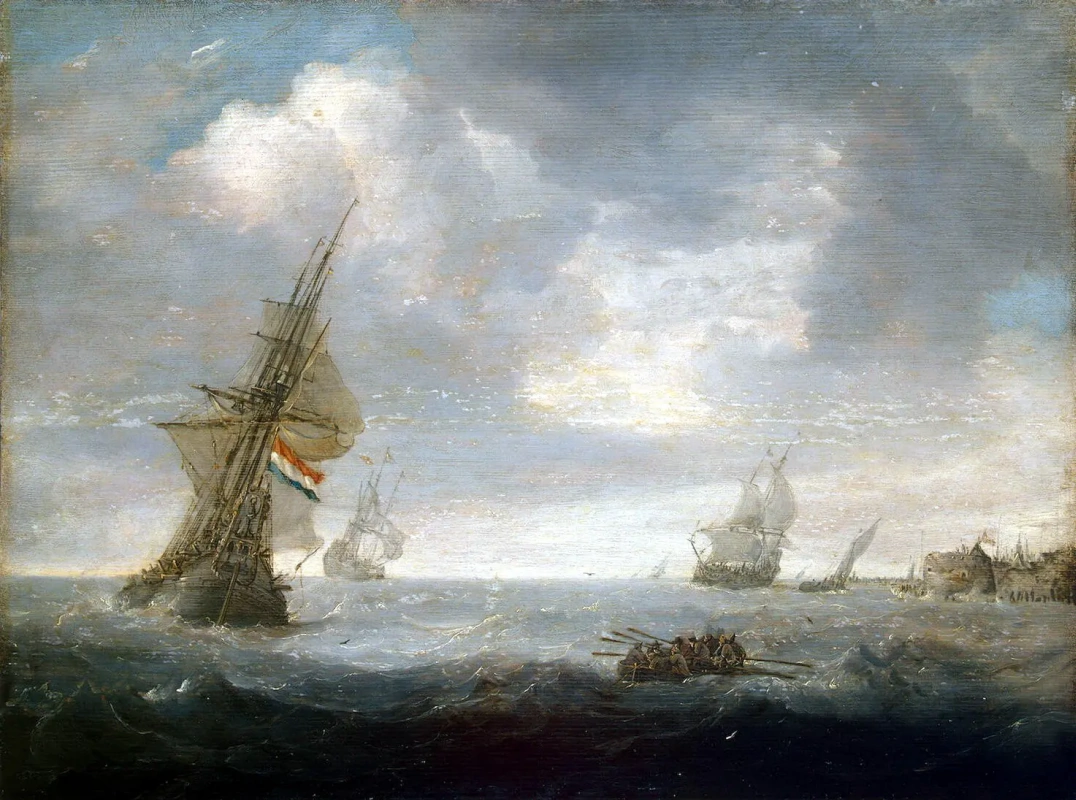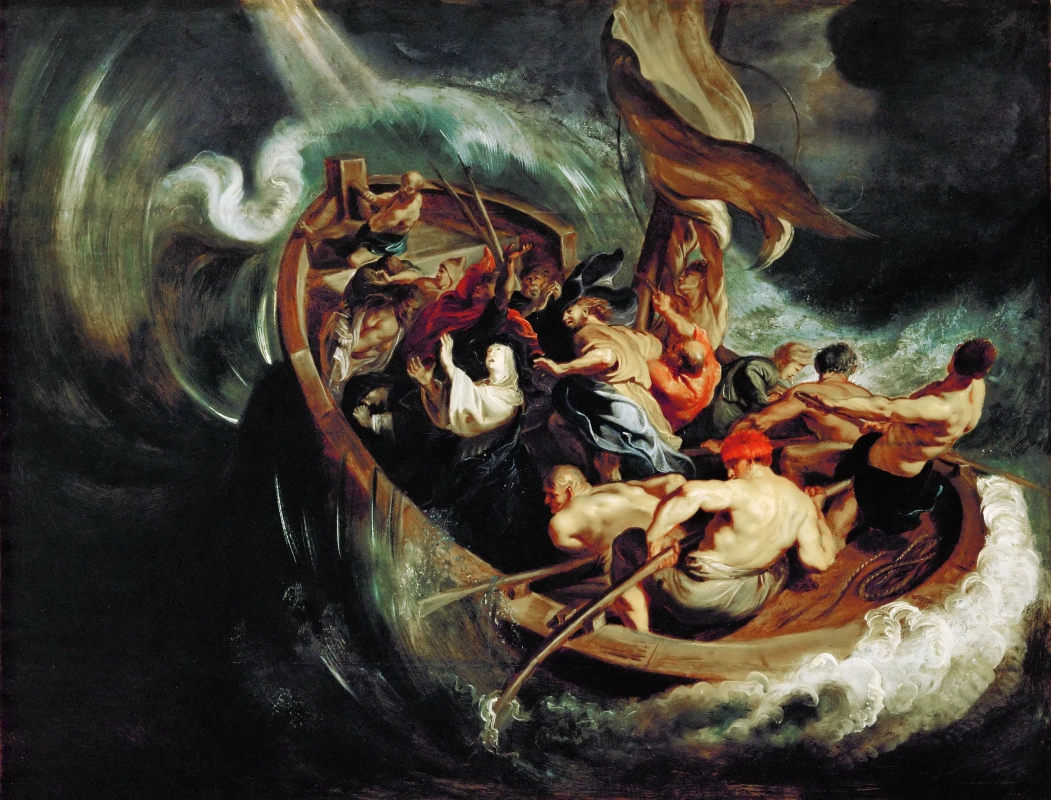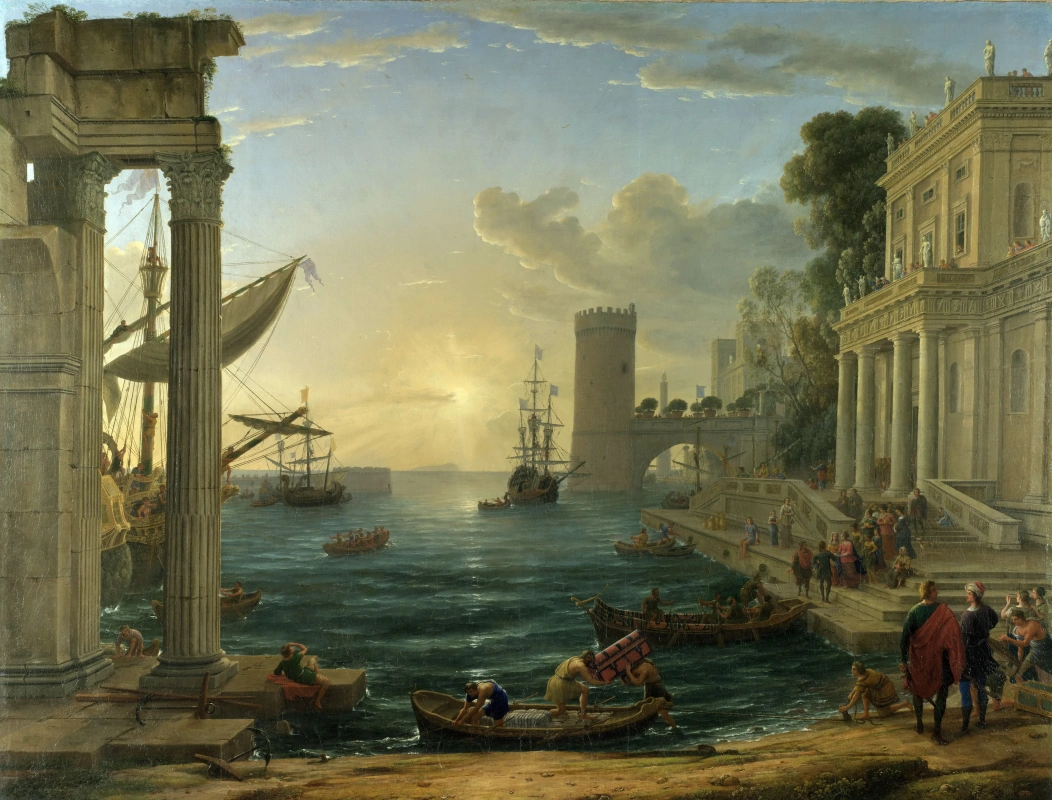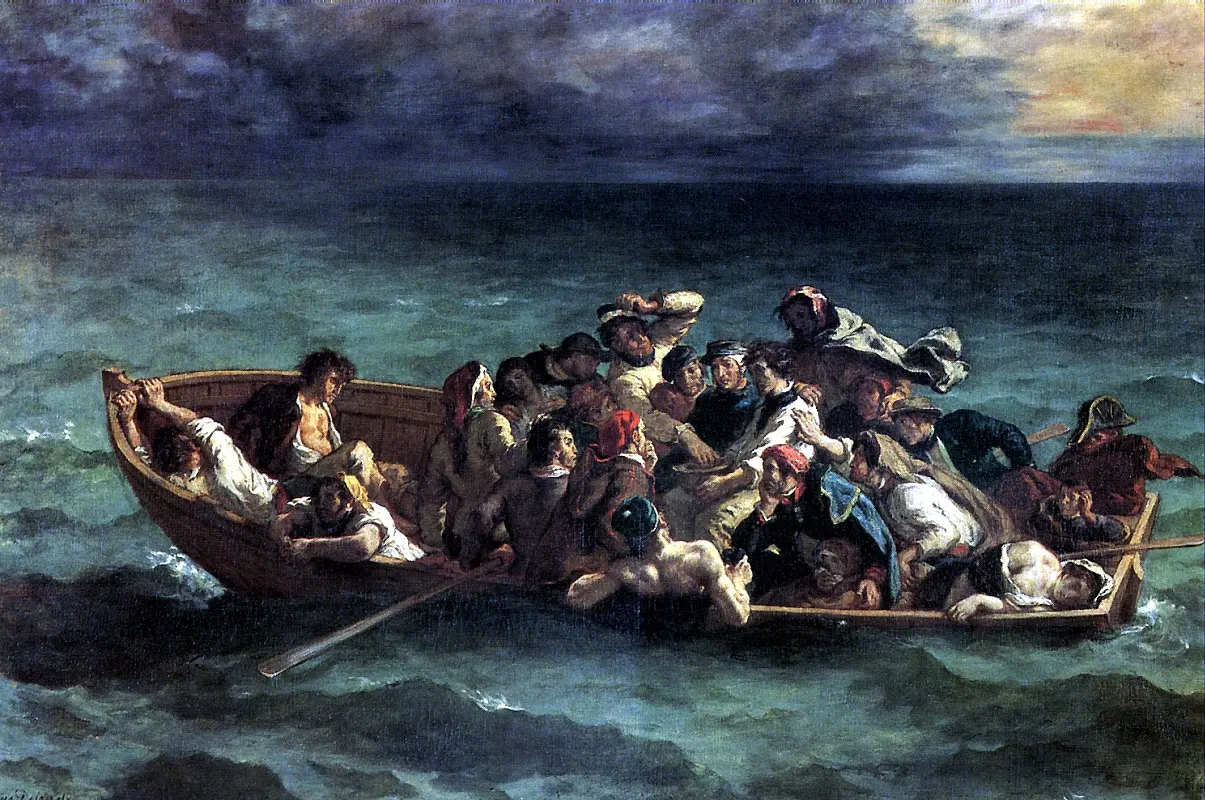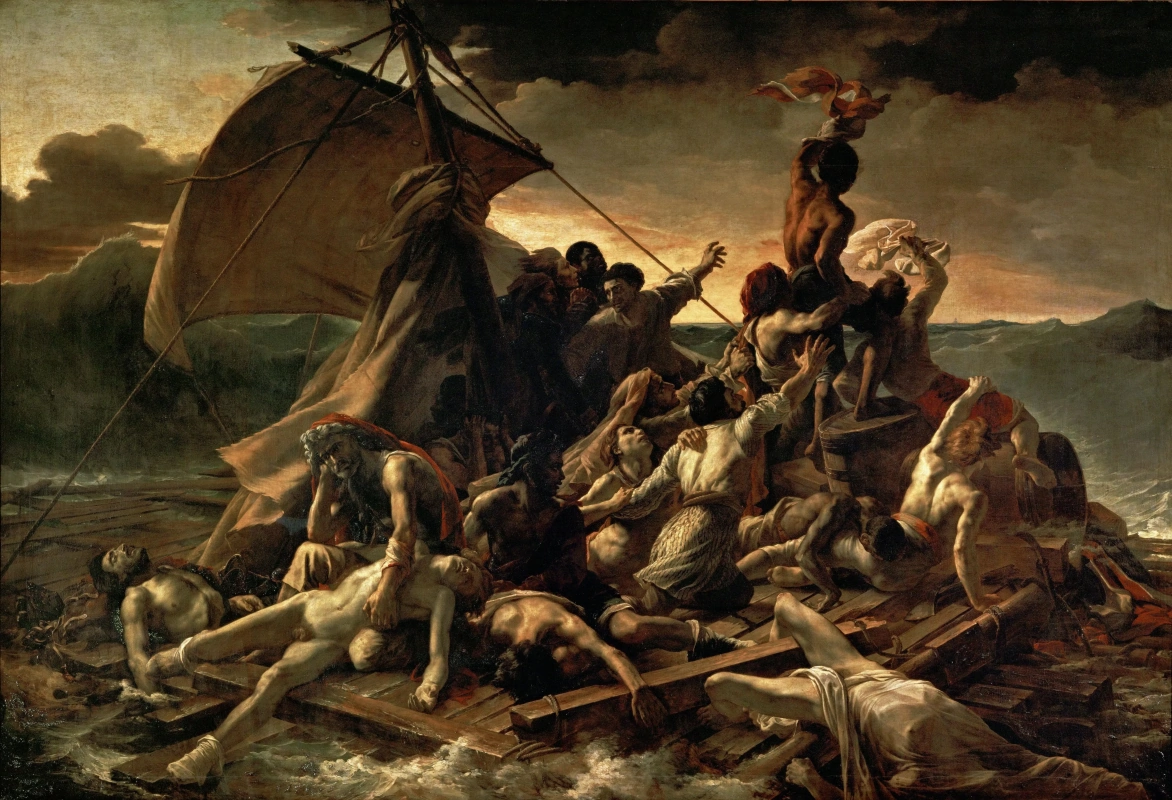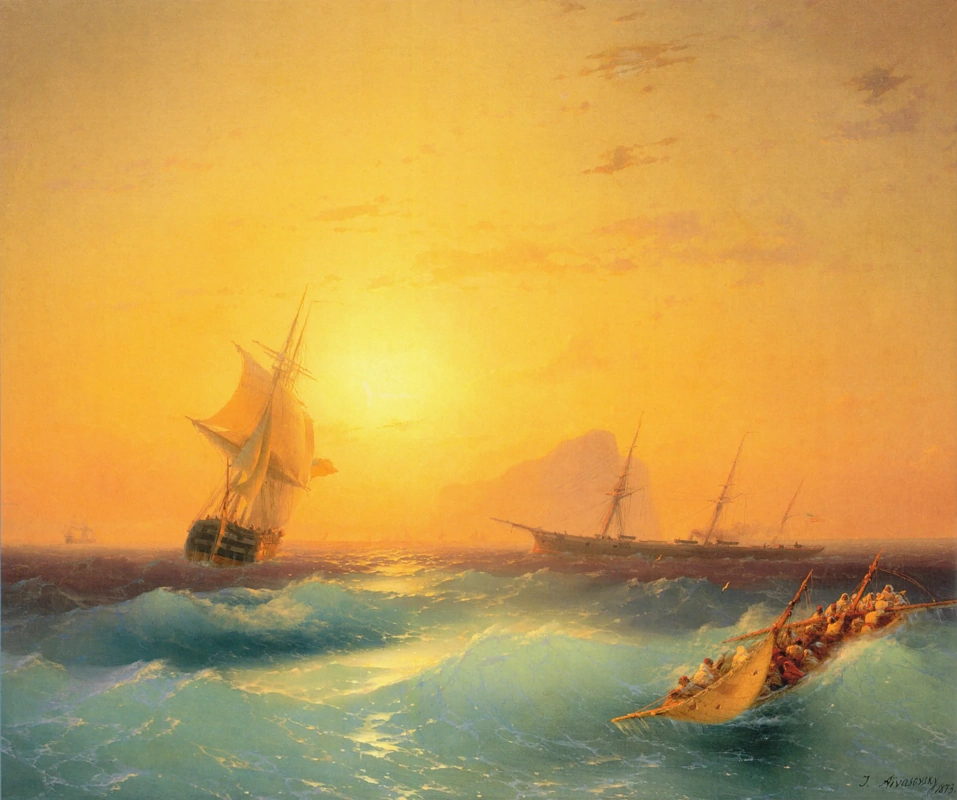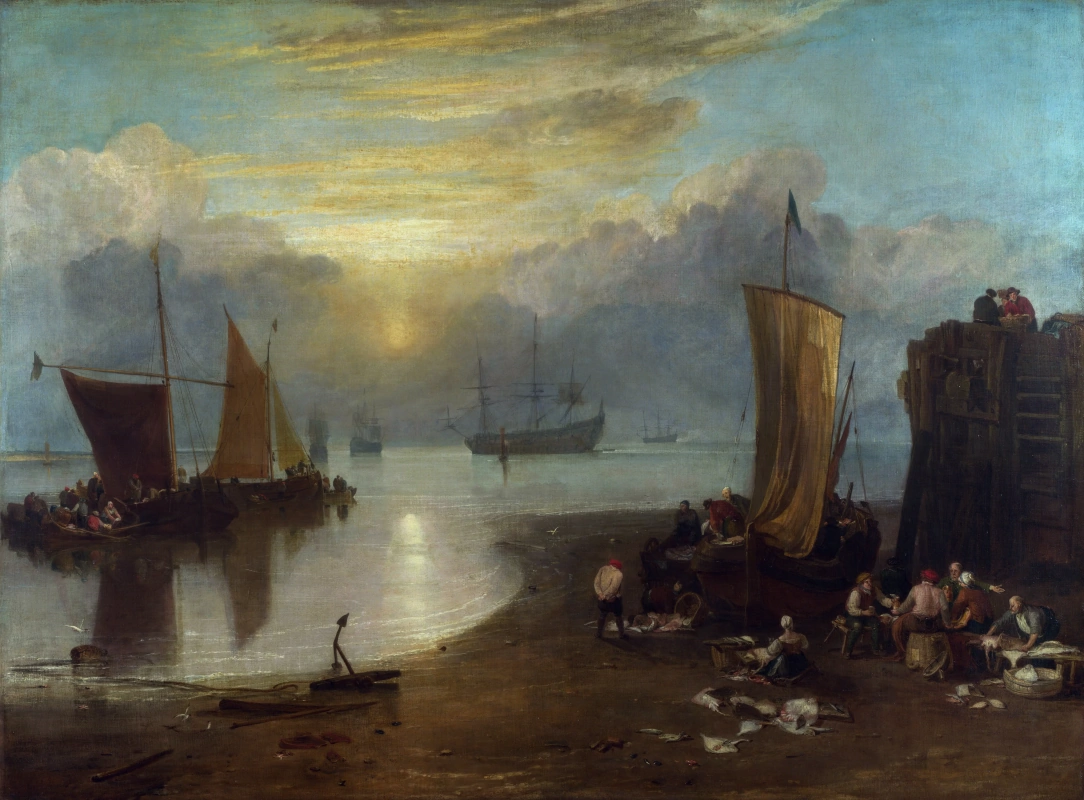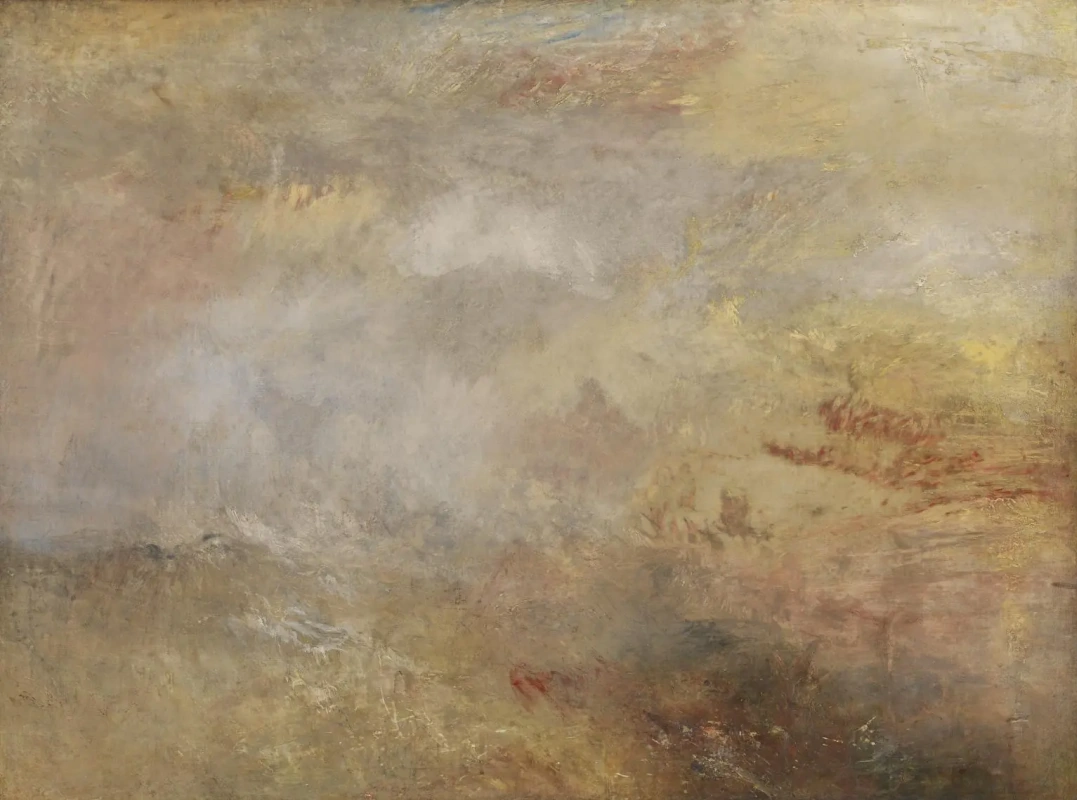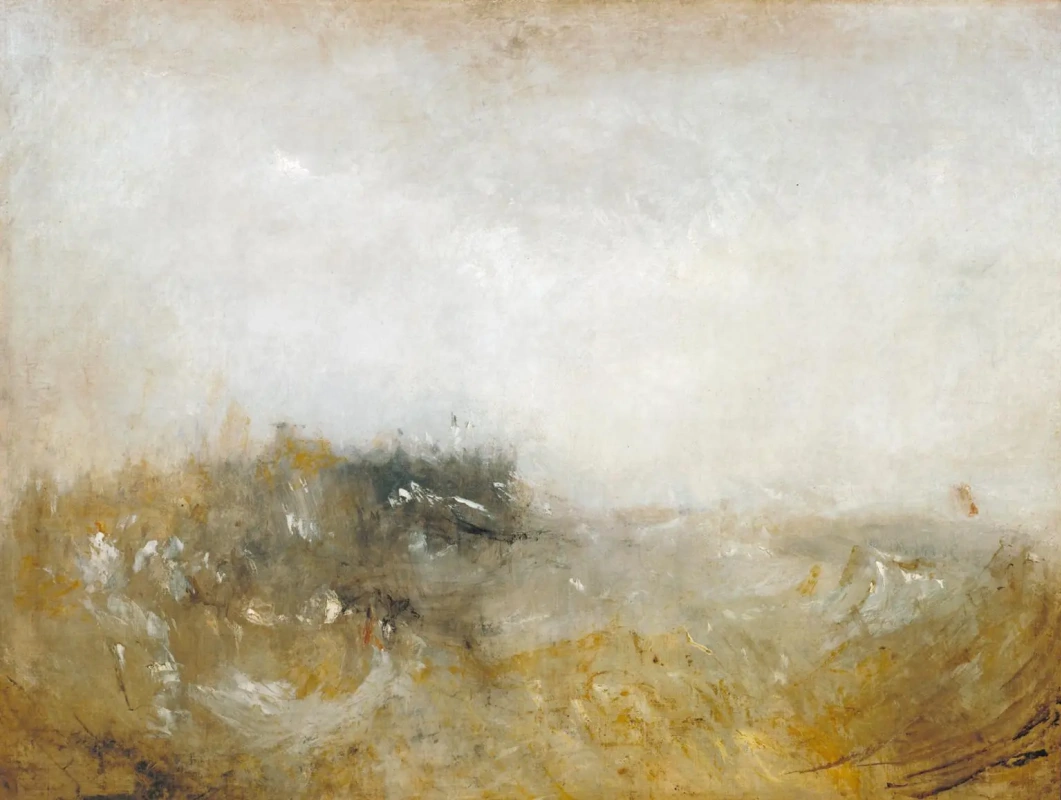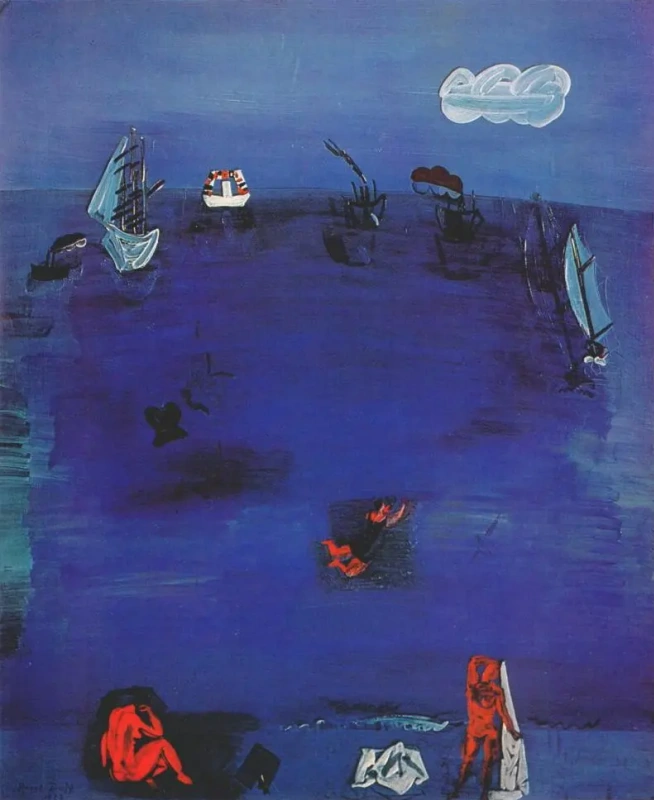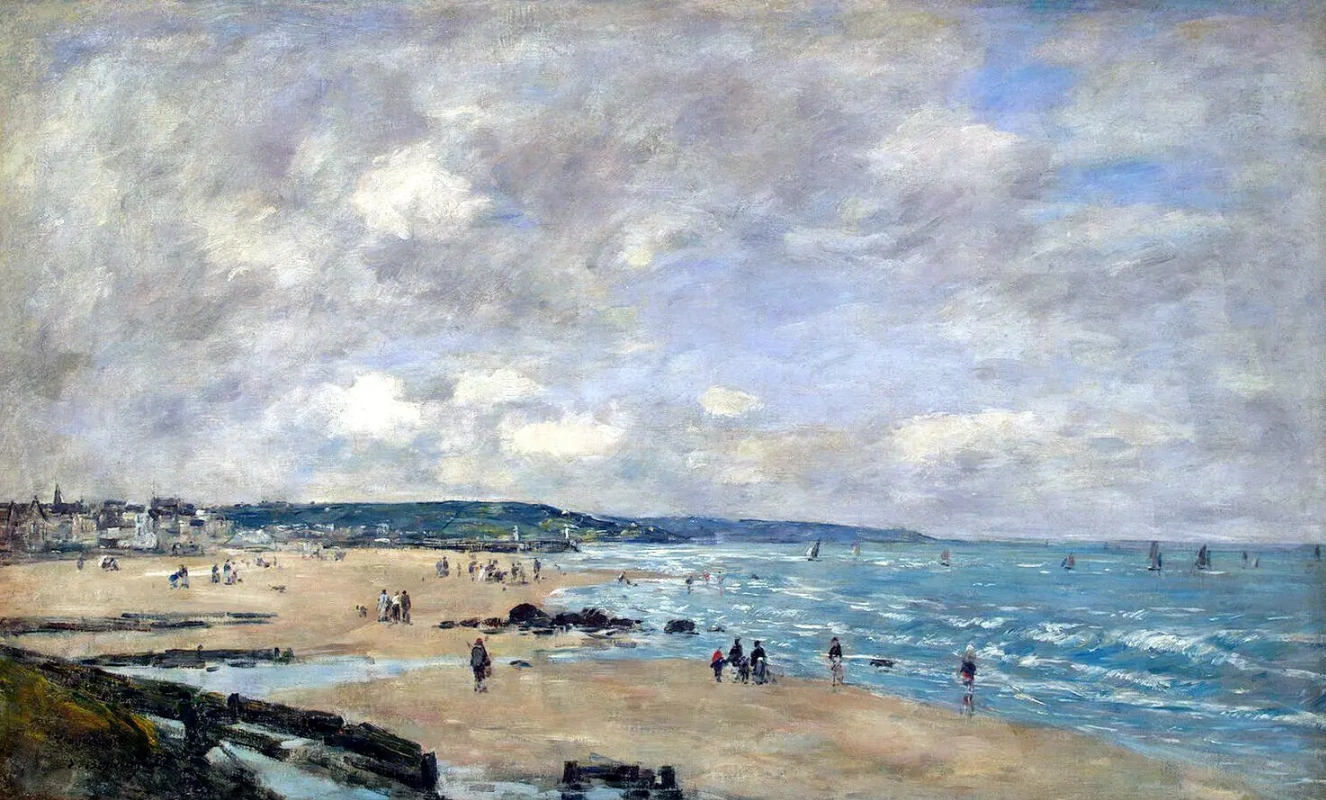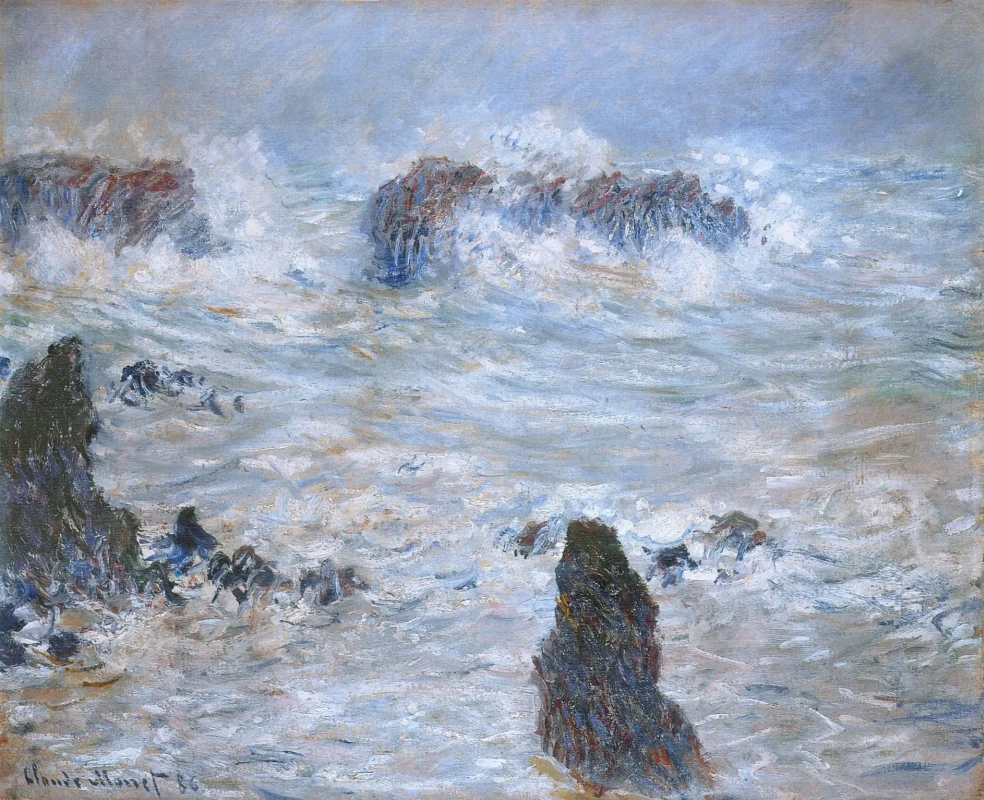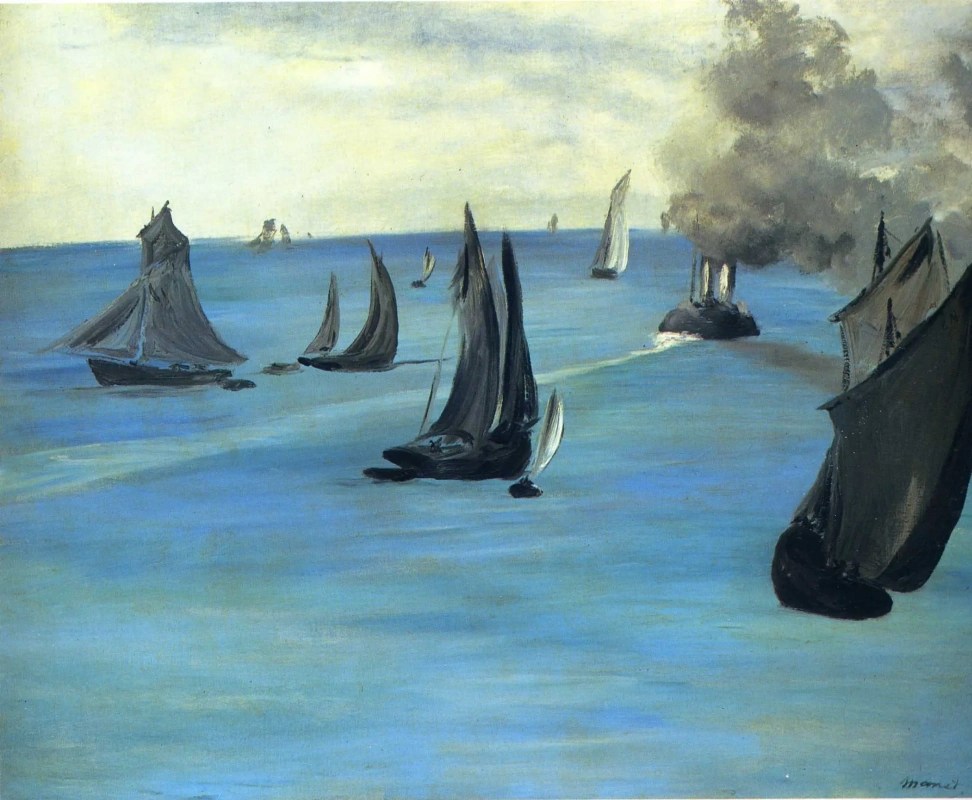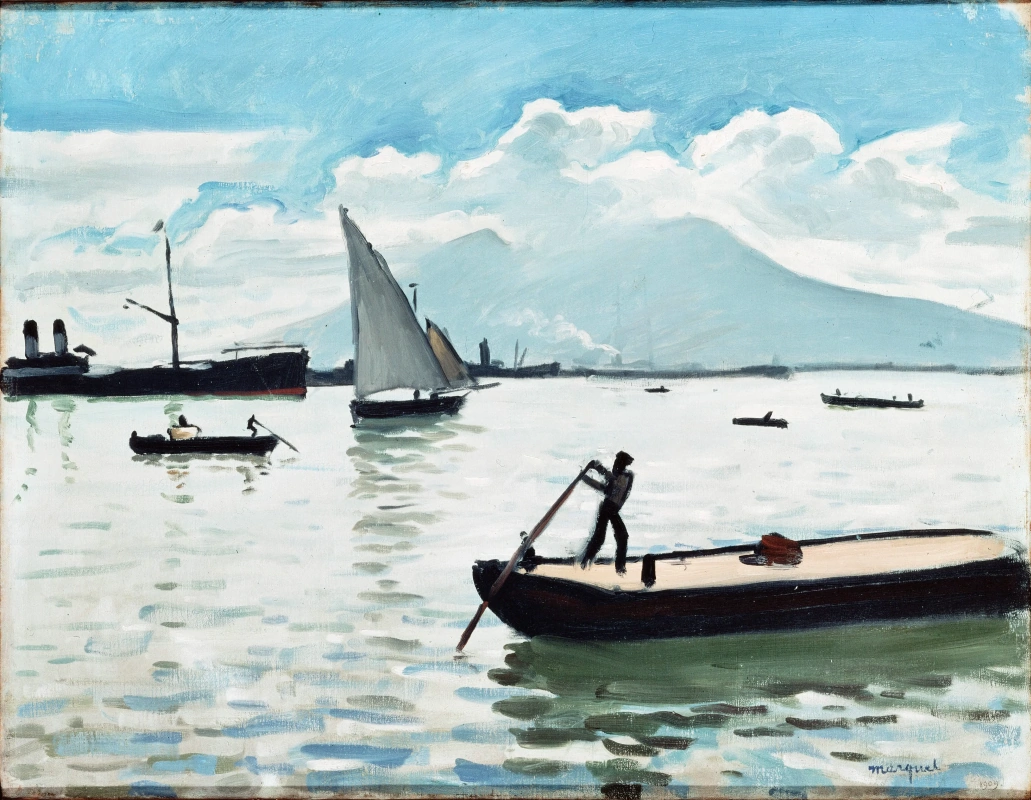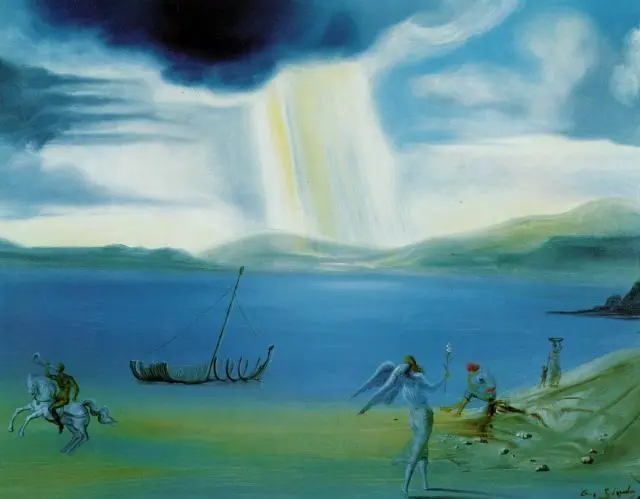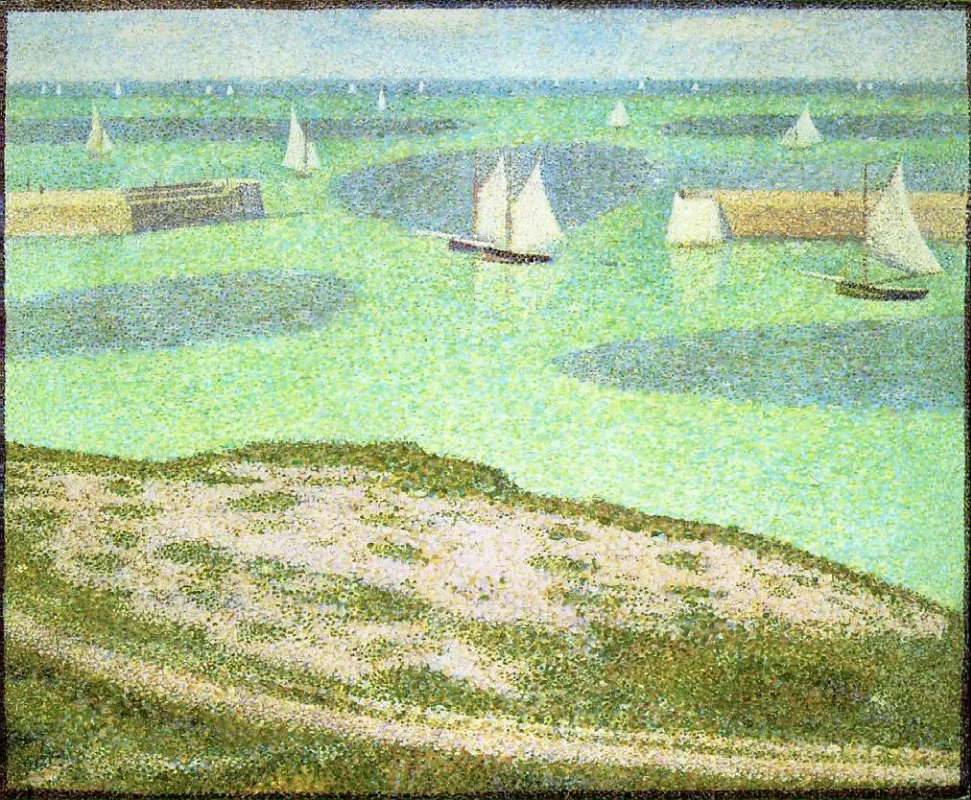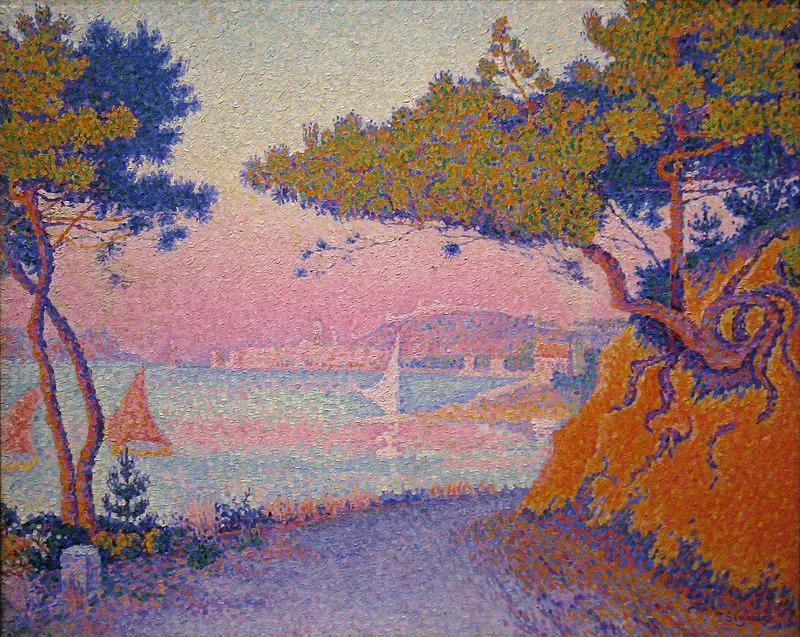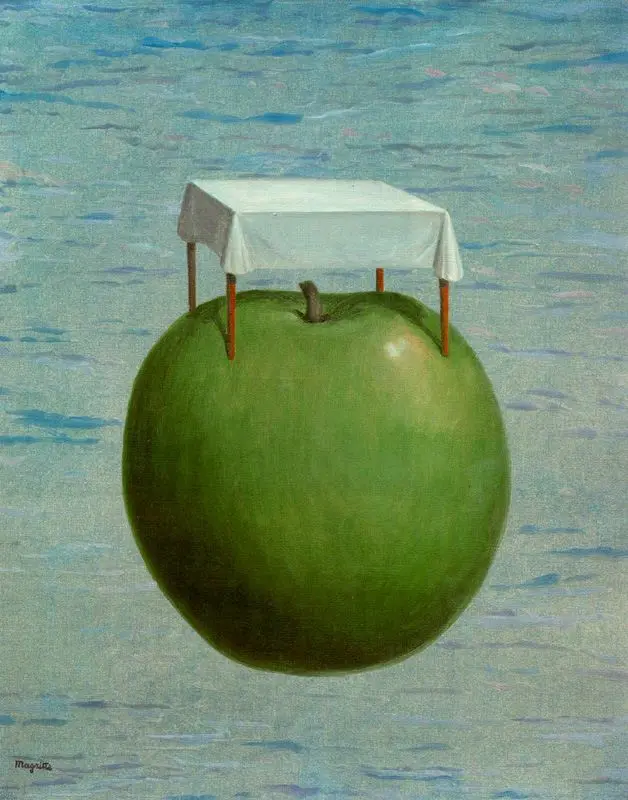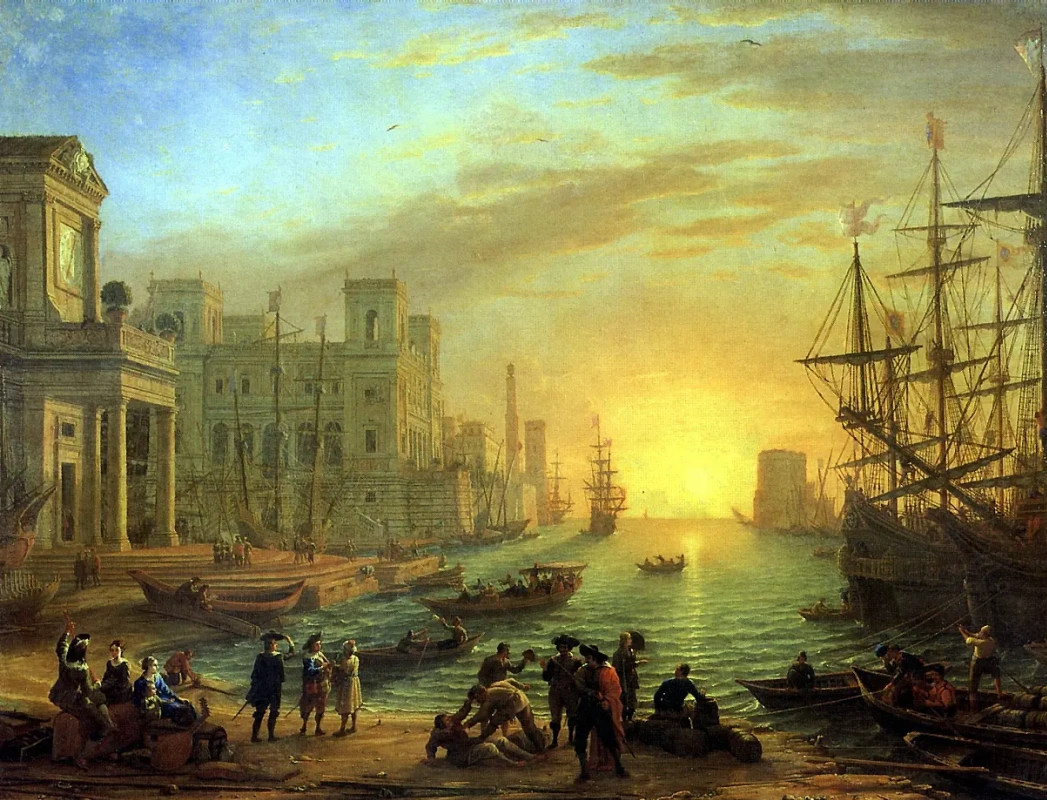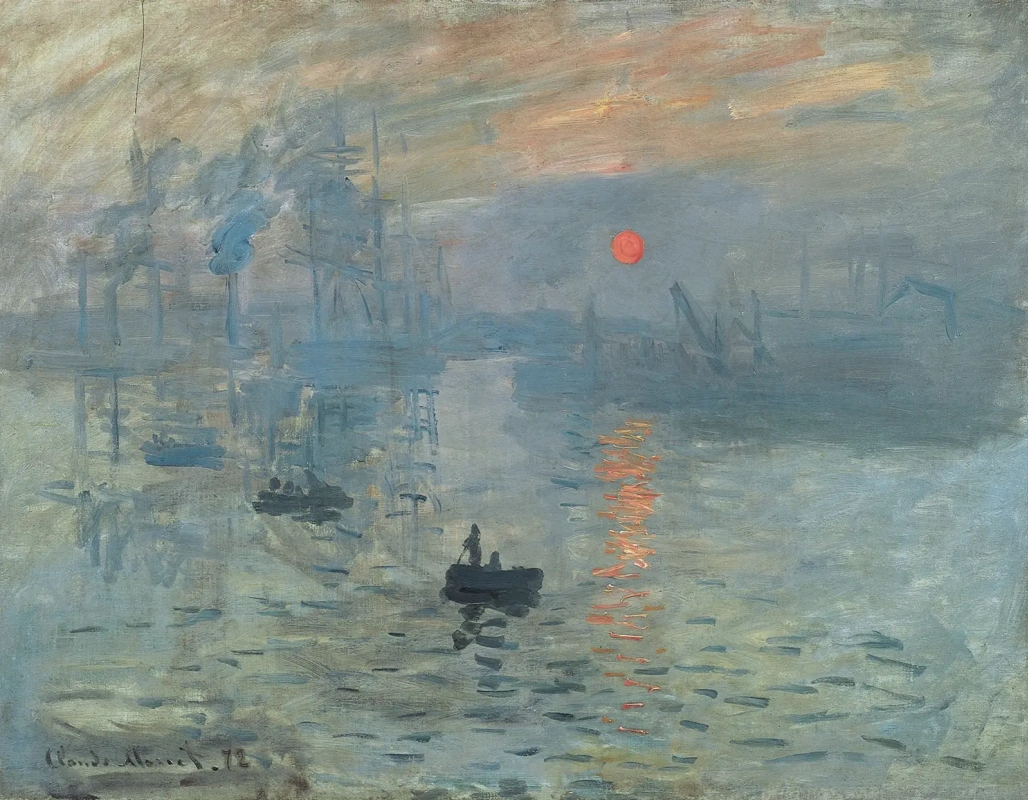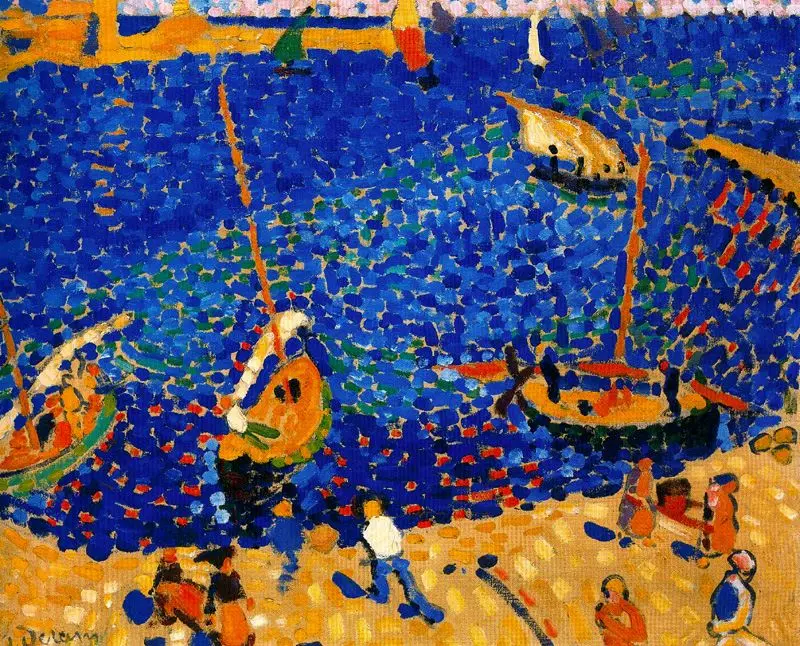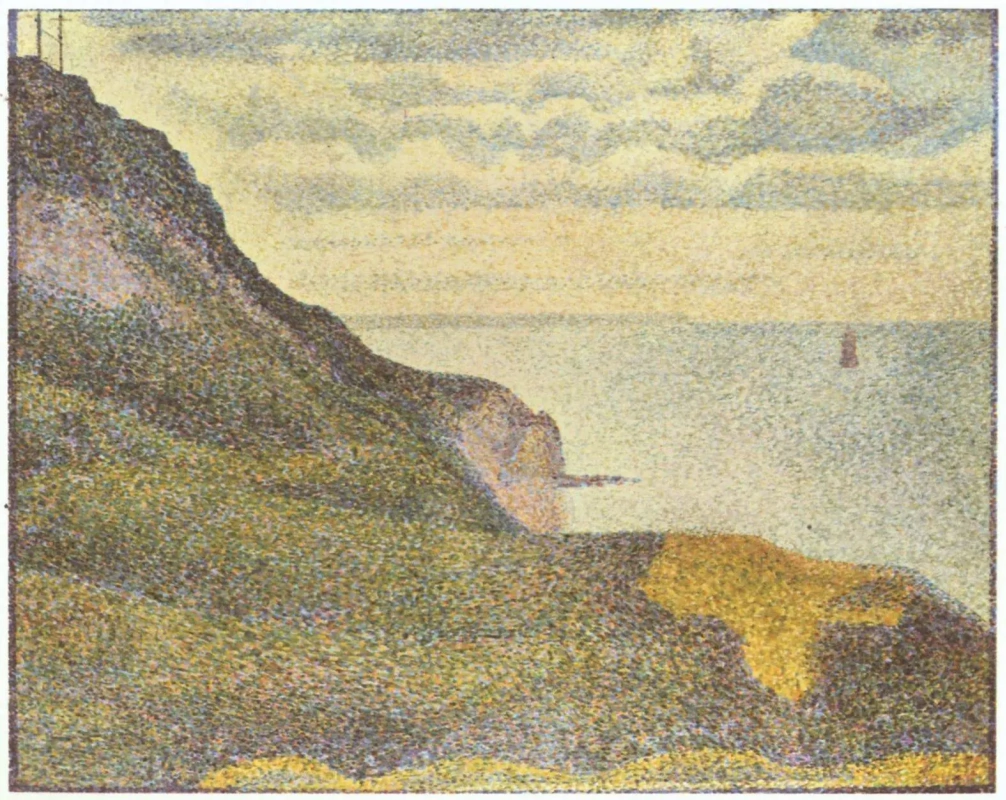Marine art or seascape is a kind of landscape that depicts the sea. Specific paintings or engravings of a sea theme are also called marines. The word marine (it. marina) comes from the Latin marinus — "of sea".
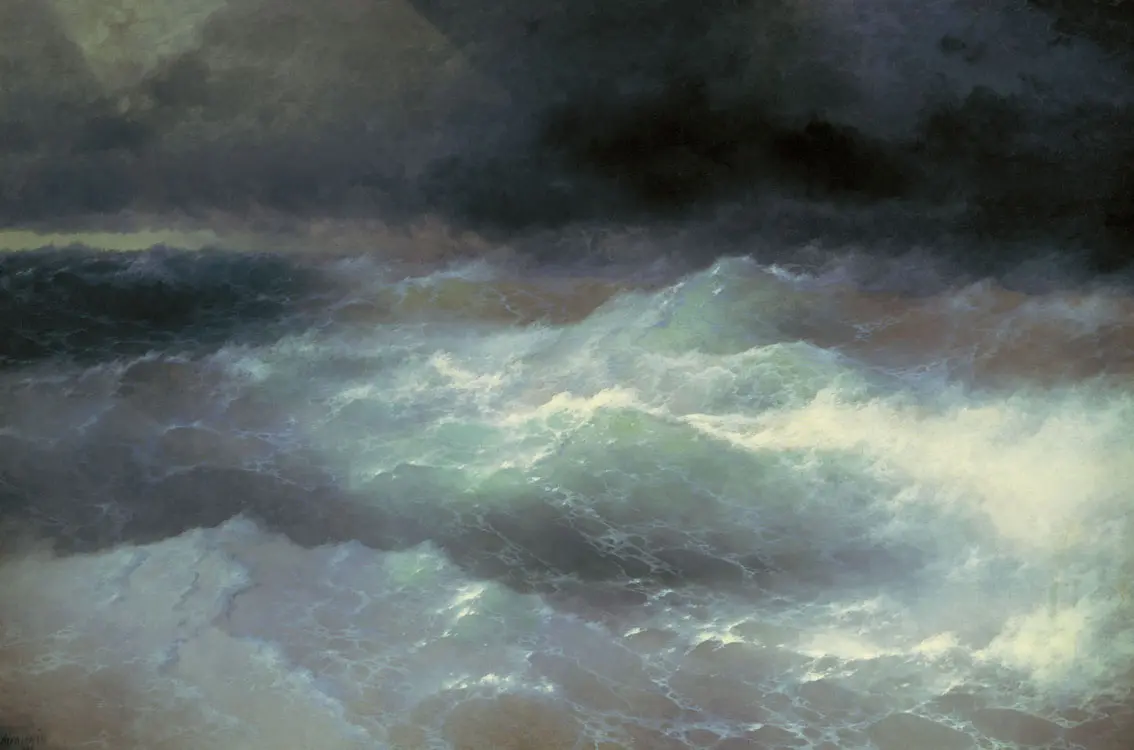
The origin of the marine genre
The earliest surviving marine art piece dates back to before 79 AD — the year of the eruption of Vesuvius. At that time, the ancient Roman city of Stabiae was destroyed. In one of the patrician houses, a painting was found depicting a seaport.
The Sea Harbour fresco, found during the excavations of Stabiae.
In the 14—15th centuries, Italians and Dutchmen painted the sea not for its own sake, but within the framework of religious subjects.

Portuguese Carracks Off a Rocky Coast. This 78.7×144.7 cm painting is considered the earliest case when the artist considered the sea worthy to be depicted for its own sake, and not as a background for a religious plot. Simply put, this is the first marine. It is dated back to 1540. The Maritime Museum (London), where the painting is kept, does not risk to name the artist. At various times, the work was attributed to Cornelis Anthonisz. and Peter Bruegel.
Seascape emerged as a separate genre in the 17th century in Holland. In the country populated by sailors and fishermen, marines were in demand. From the surviving paintings of that era, we can get an idea of the radically different approach of painters to the depiction of the elements. At the beginning of the 17th century, the Dutchman Hendrik Cornelisz Vroom showed naval battles against the Spaniards. The sea remained "a place where something happened", this time it was just something historical, not mythological. His compatriot Jan Porcellis took a plunge: the sea became the main subject of the image. Porcellis is considered one of the founders of the maritime trend in landscape painting.
Sea on a cloudy day
1630, 47.5×63.5 cm
Porcellis seemed to have a great deal of respect for the ships, and brilliantly conveyed their structure and equipment. His sea is almost monochrome, very softly depicted.
In the depiction of the sea element, the Dutch (and the Flemings) were no strangers to symbolism. The element could mean both the expanse of life, and the overwhelming wave of feelings, etc. There was also a place for water in religious subjects.
Holy Walburga's and the miracle of salvation in a storm
1611, 75.5×98.5 cm
Alternative marines
The definition of marine should not be taken too narrow. For example, the Venetian form of marine is not really marine. Canaletto and Guardi were really remarkable in this context, although it is not entirely correct to call them marine painters — they painted Venice and the Adriatic Sea around it (however, Guardi sometimes still turned to the big sea). And Claude Lorrain, from a formal point of view, paid much more attention to the depiction of ports and mythological subjects than to the actual sea element. At the same time, the greatest marine painter Turner was obsessed with him. It was Lorrain who introduced the shining sun into the seascapes.
Departure of the Queen of Sheba
1648, 194×149 cm
Marine was most demanded mainly by romanticists rather than classicists. In fact, what portrays a storm of feelings better than a sea storm? And since the marginal states were especially appreciated in romanticism, the marine turned out to be a very convenient genre in this sense: it was an ideal way to show the maximum emotional intensity, placing a person in the centre of the raging element.
Aivazovsky worked in the style of romanticism and later realism
. His name is perhaps the first to be remembered with the word marine. Aivazovsky left about six thousand seascapes. Marines by the young artist, who went abroad for the first time, were highly appreciated by the already recognized British marine painter William Turner. Speaking about Turner, not only did he fill his canvas with shining sunlight, combining it with the sea into an incredible cocktail, not only did he create shining fogs in his paintings, from which the Impressionists emerged, and therefore set the direction for the entire subsequent development of painting… The main thing is that Turner proclaimed the sea an end in itself. He was only interested in the sea, the sun above it and the sky. The seascape is no longer "the environment in which something happens", rather people are just extras highlighting the power and beauty of the elements.
American Shipping off the Rock of Gibraltar
1873, 109×131 cm
Sunrise through the fog. Fishermen clean and sell the fish
1807, 134×179.5 cm
Eugène Boudin, who was nicknamed the King of the Sky, worked in the same direction. On this basis, the Impressionists could already have appeared — and they did. Charles Baudelaire described the Impressionist approach to landscape as follows: they conveyed atmospheric conditions in accordance with the place, time and wind. "Atmospheric conditions" — who would have thought that this, and not the events taking place against the sea background, will become the essence of the marine henceforth!
Impressionism is also important as a forerunner of the following trends, it was not limited to the shimmering waters of Monet and the busy ports of Manet. Bright flashes of Matisse’s marines, graceful watercolours by Marquet, elegant regattas by Dufy and a completely new interpretation of the seascape in the works by Seurat and Signac — the marine genre developed in different directions at once. The marines also penetrated the dream plots by Salvador Dalí and René Magritte.
Impressionism is also important as a forerunner of the following trends, it was not limited to the shimmering waters of Monet and the busy ports of Manet. Bright flashes of Matisse’s marines, graceful watercolours by Marquet, elegant regattas by Dufy and a completely new interpretation of the seascape in the works by Seurat and Signac — the marine genre developed in different directions at once. The marines also penetrated the dream plots by Salvador Dalí and René Magritte.
One of the most famous contemporary marine painters is Tim Thompson. All sorts of images of sailing ships and regattas brought him popularity. His brush is especially beneficial to the America’s Cup, to which many of his images of the sea and sailing ships are dedicated Photo: usenkomaxim.ru
A Crib
Famous artists who painted marine:
Ivan Aivazovsky, William Turner, Claude Lorrain, Jan Porcellis, Cornelis Anthonisz, Pieter Bruegel the Elder, van de Velde brothers, Jacob van Ruisdael, Salvator Rosa, Joseph Vernet, James Edward Buttersworth, Eugène Delacroix, Gustave Courbet, Claude Monet, Raoul Dufy, Henri Matisse, Albert Marquet, André Derain, Katsushika Hokusai, Sylvester Shchedrin, Alexey Bogolyubov.Significant marines
Storm (Storm at sea)
1568, 70.5×97 cm
For the first time, the artist captured the raging sea element on canvas — it also became the last painting by Bruegel.
Christ in the storm on the sea of Galilee
1633, 160×128 cm
This is asingle marine of Rembrandt that was stolen from a museum in Boston and it has not been found yet.
Sea port at sunset
1639, 137×103 cm
Lorraine put such a dazzling sun on his canvases that it seems to have brought to life Turner’s talent as a marine painter. According to a legend, Turner burst into tears from an excess of feelings in front of one of Lorrain’s paintings, stating that no one could repeat this.
Ulysses taunts Polyphemos
1829, 132.5×203 cm
Turner gave his marines a shine that no one else has been able to replicate. He proclaimed (not in manifestos, but in his paintings) that there is nothing more important than the sea and sky in the seascape. It was Turner who became the harbinger of the Impressionists.
Impression. Sunrise
1872, 48×63 cm
Because of this painting by Monet, Impressionists have got their name.
Boats in Collioure
1905
The synthesis of Impressionism and Fauvism
gave birth to marines like this one by Derain.
The tower and sea view in port-EN-Bessin
1888, 66×81 cm
The founder of Neo-Impressionism, to which almost all of Seurat’s contemporaries in France touched to some extent; he painted completely different marines than the Impressionists themselves. From these pictures, not lightness and fleetingness looks at us, but eternity, frozen time.
You are a layman — if hearing about seascape you only remember Aivazovsky. Without belittling his talent, we must recall that many artists painted marines both before and after him. For example, Levitan.
You are an expert — if you understand that the essence of the marine is not the inevitable salinity of the water depicted. Turner’s Thames and Monet’s Seine are not formally seas, but are essentially inseparable from the marine genre.
You are an expert — if you understand that the essence of the marine is not the inevitable salinity of the water depicted. Turner’s Thames and Monet’s Seine are not formally seas, but are essentially inseparable from the marine genre.
Title illustration. Ivan Aivazovsky. Among the Waves
Author: Aliona Grosheva
Author: Aliona Grosheva







